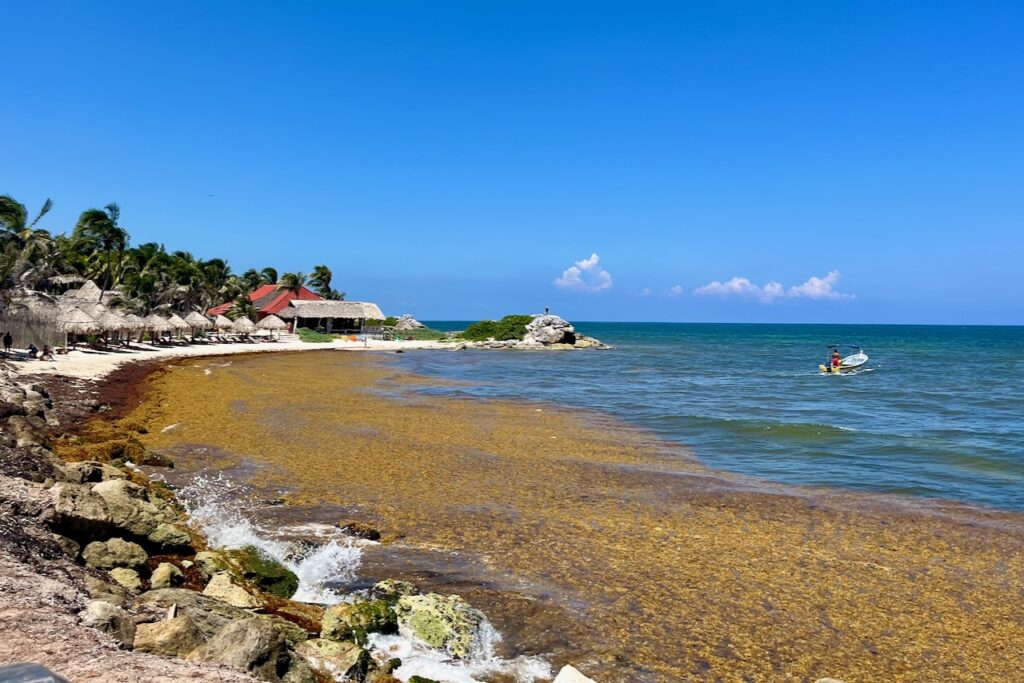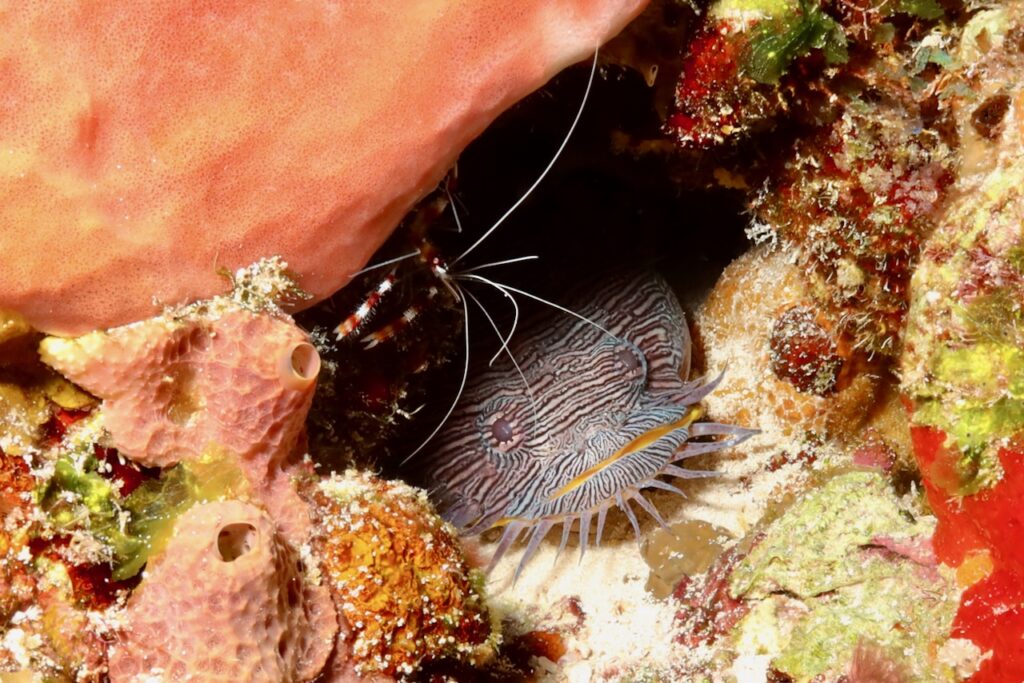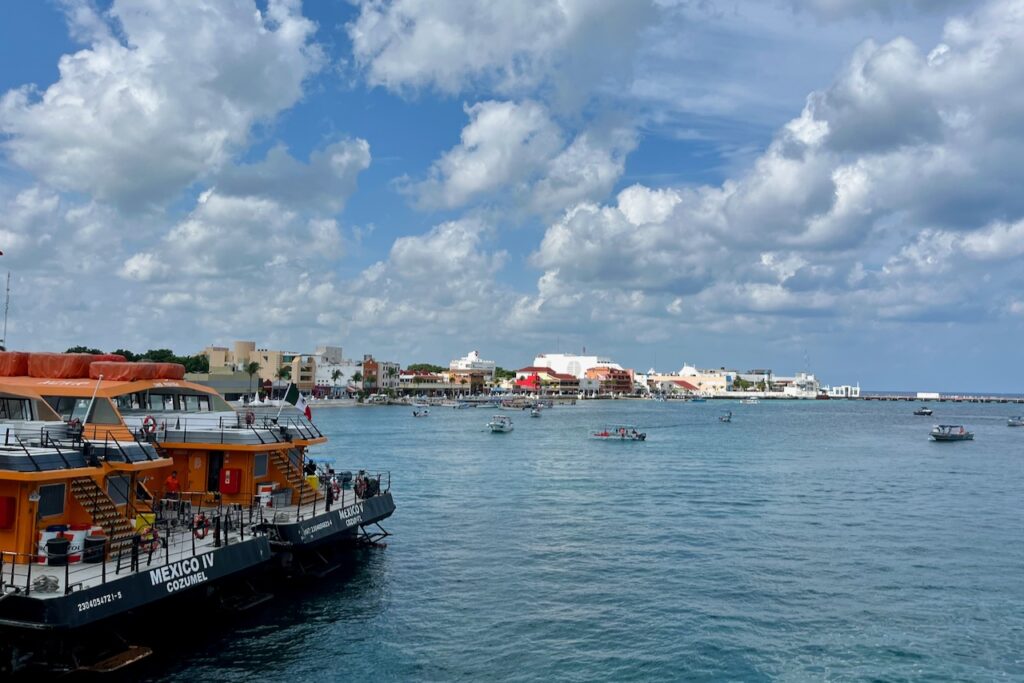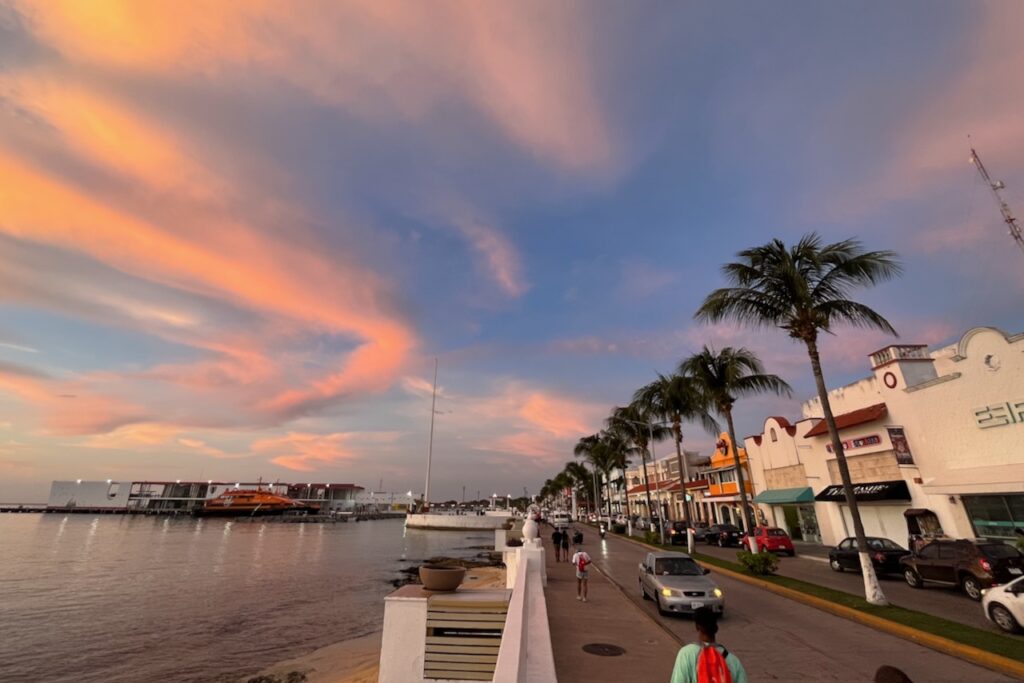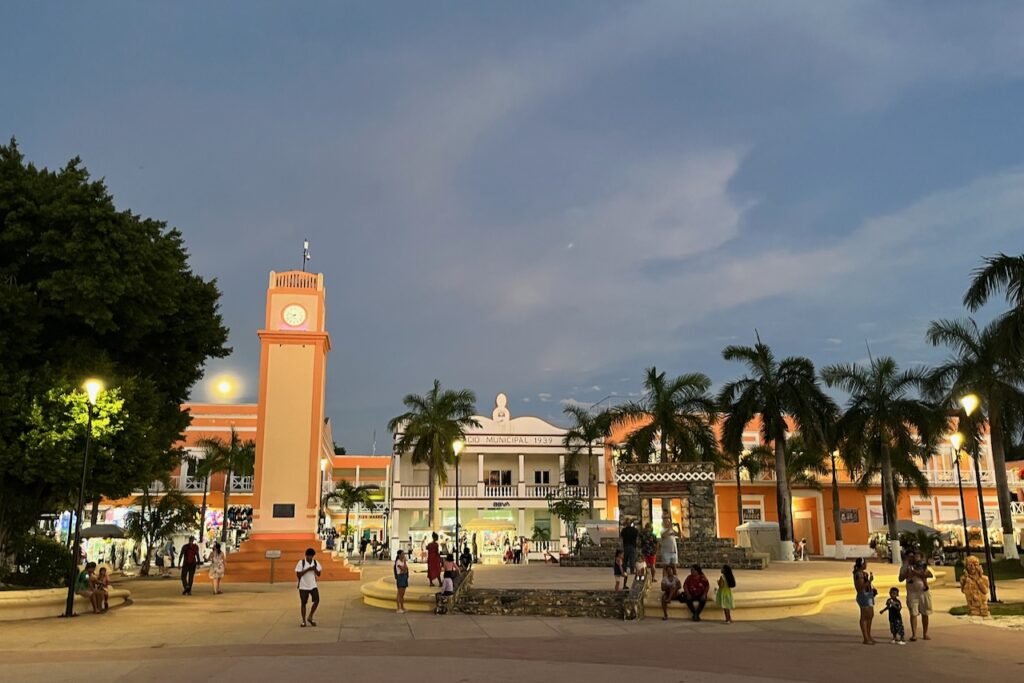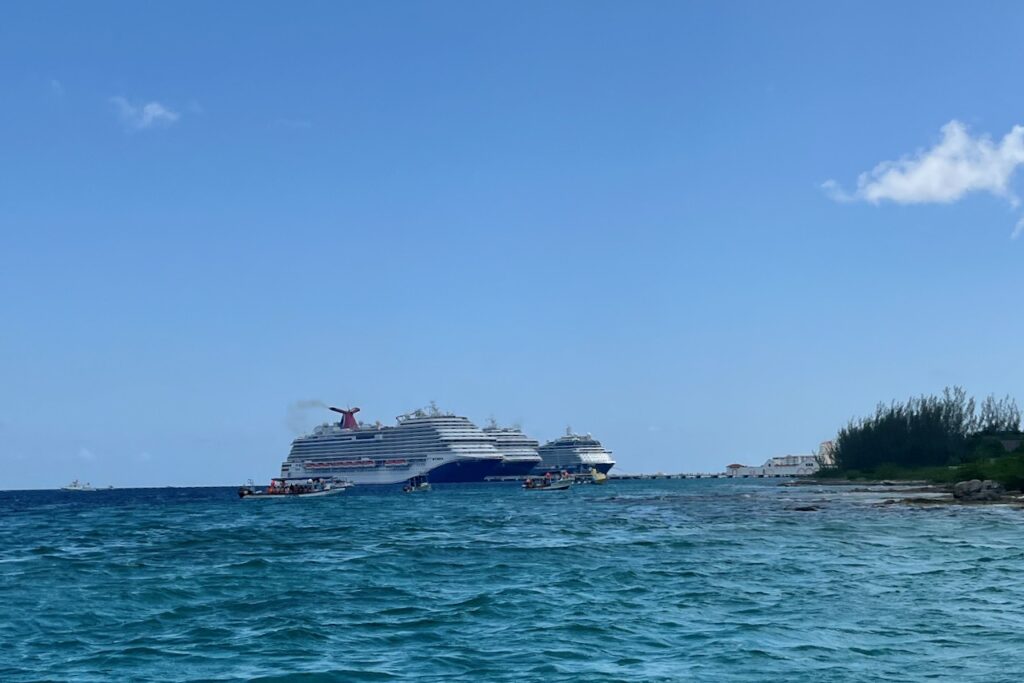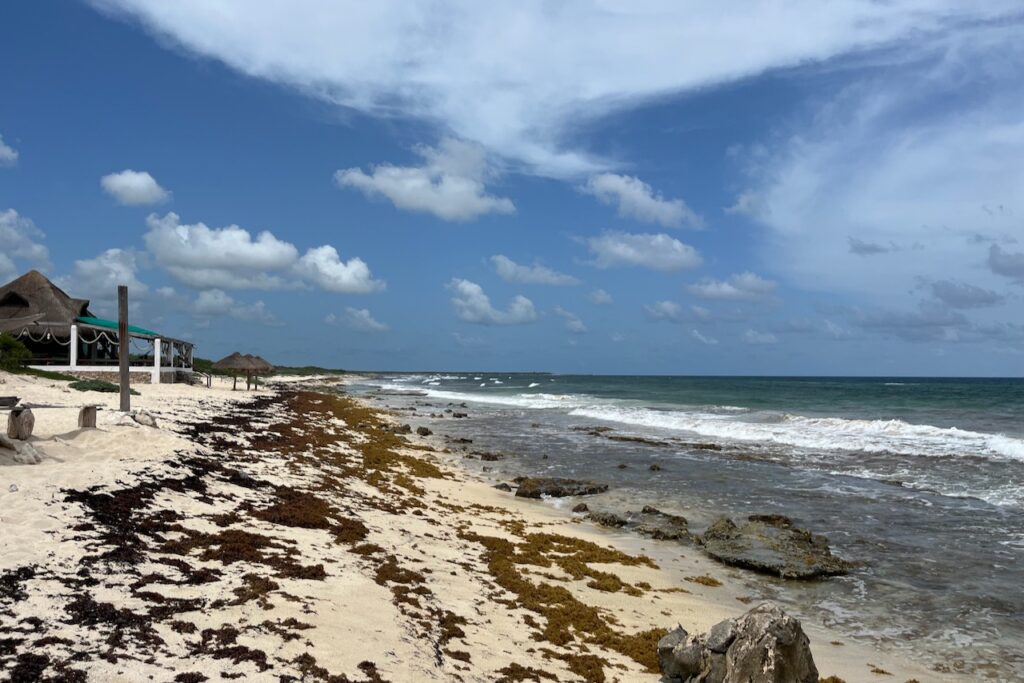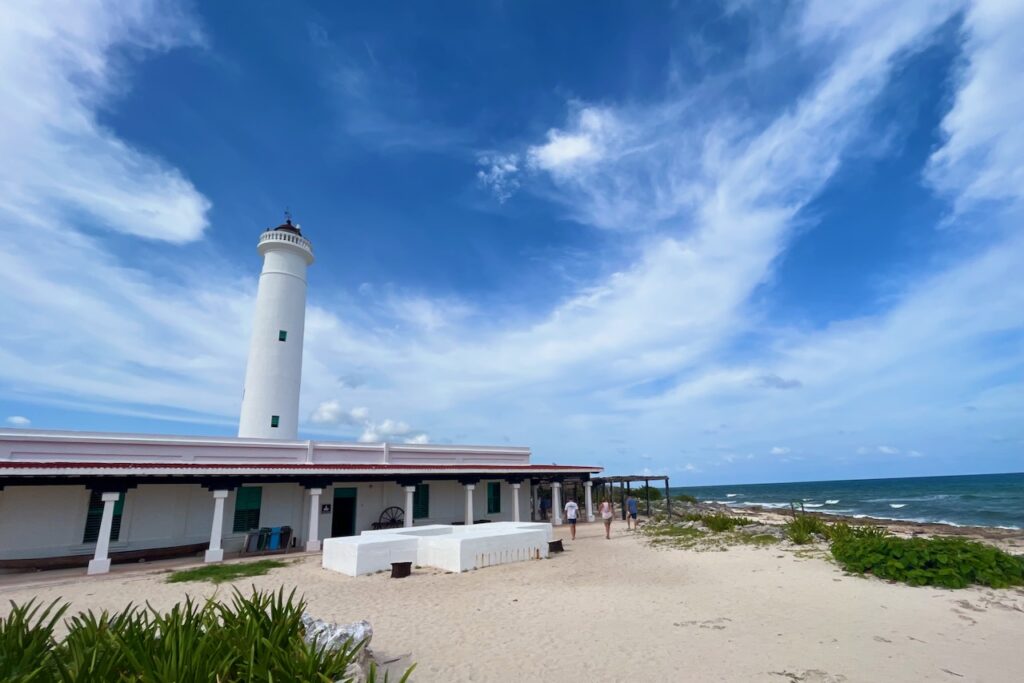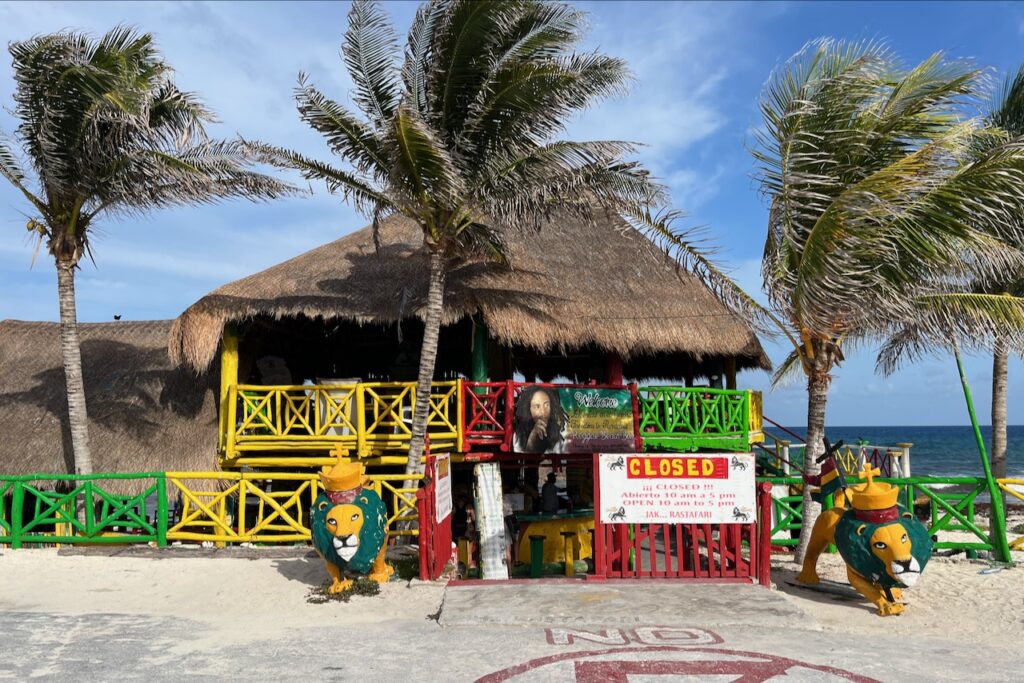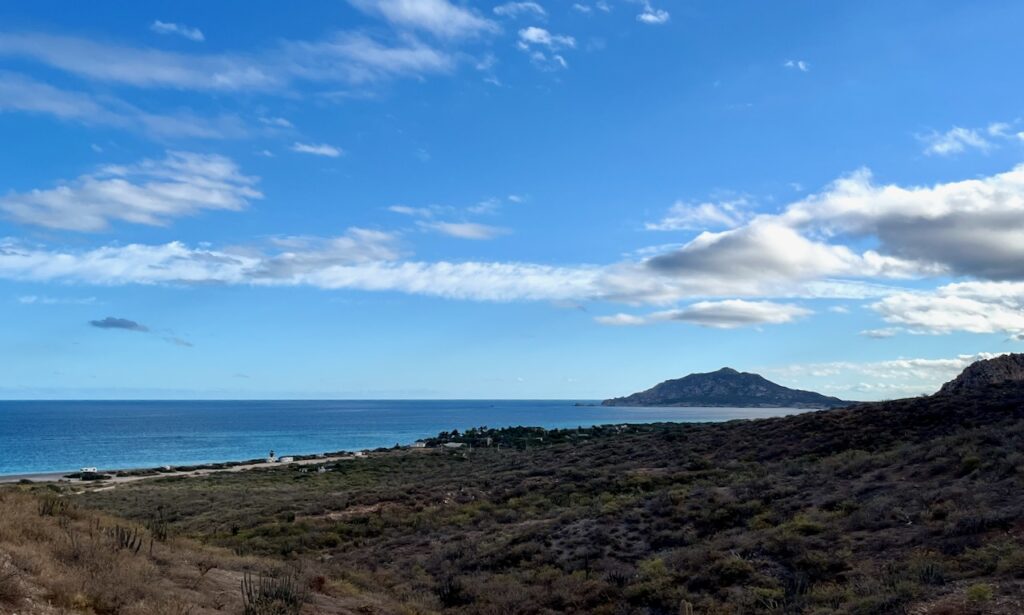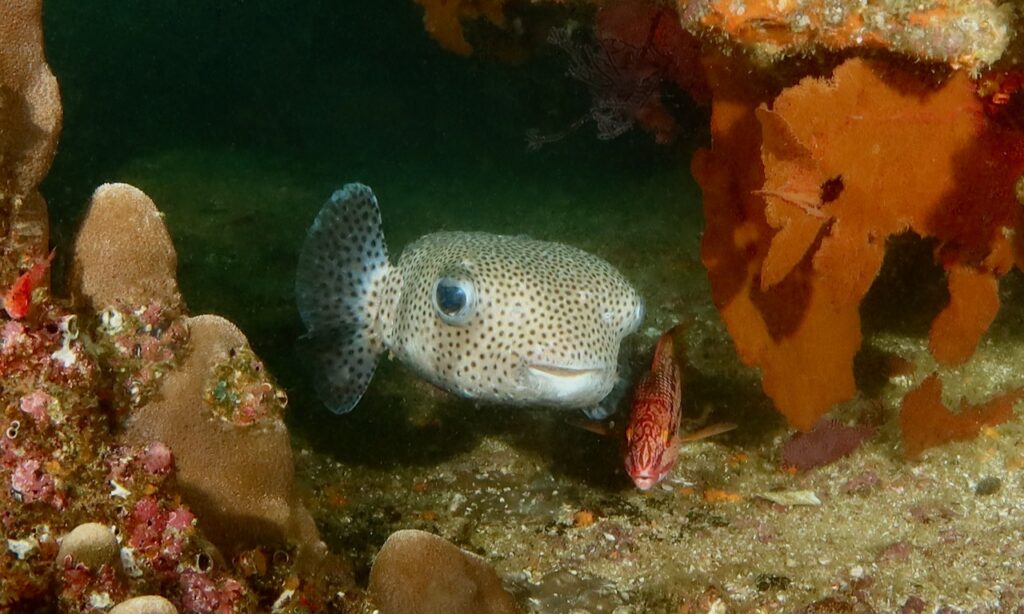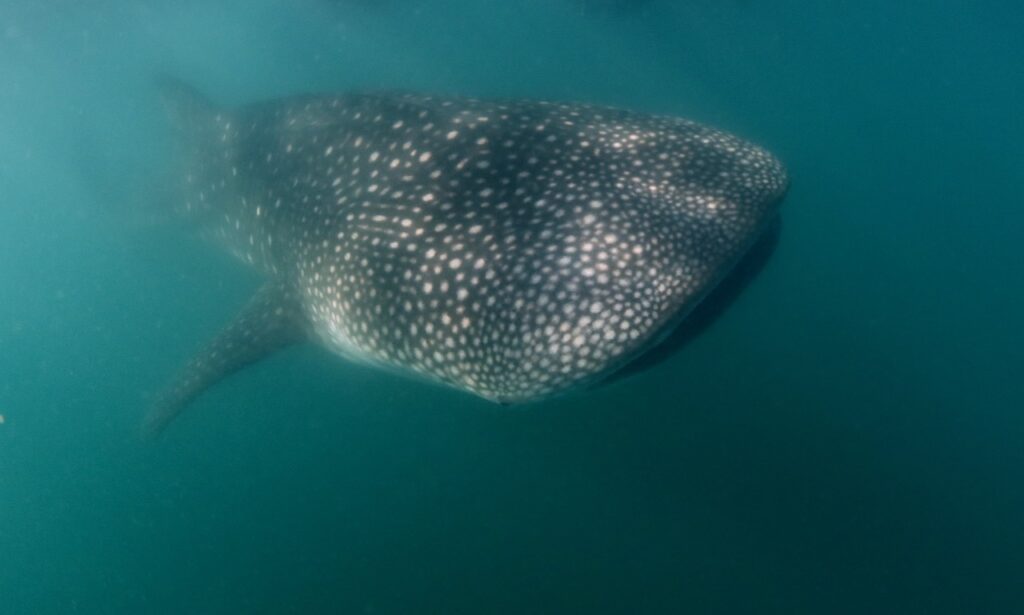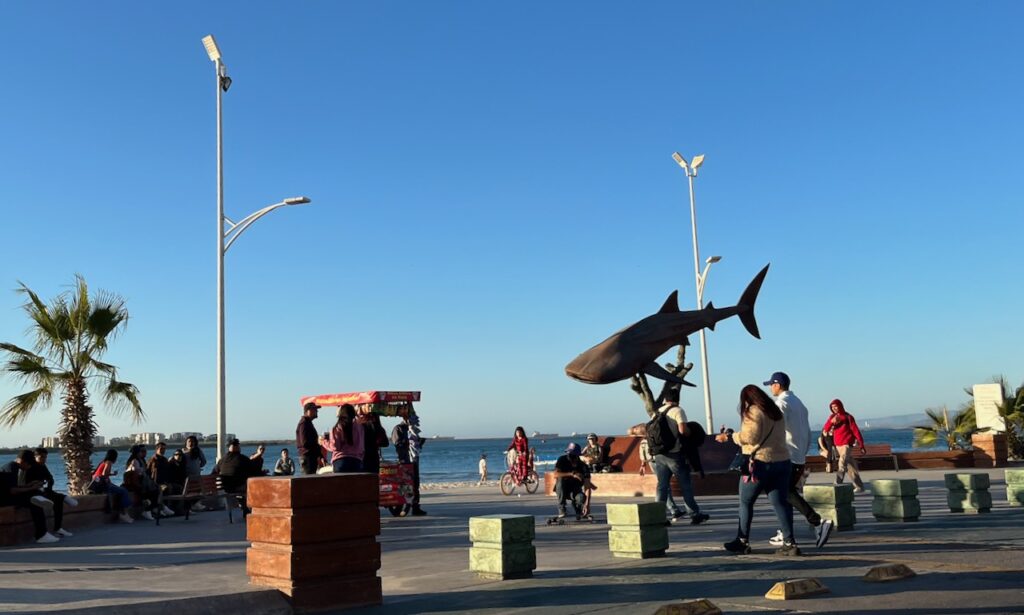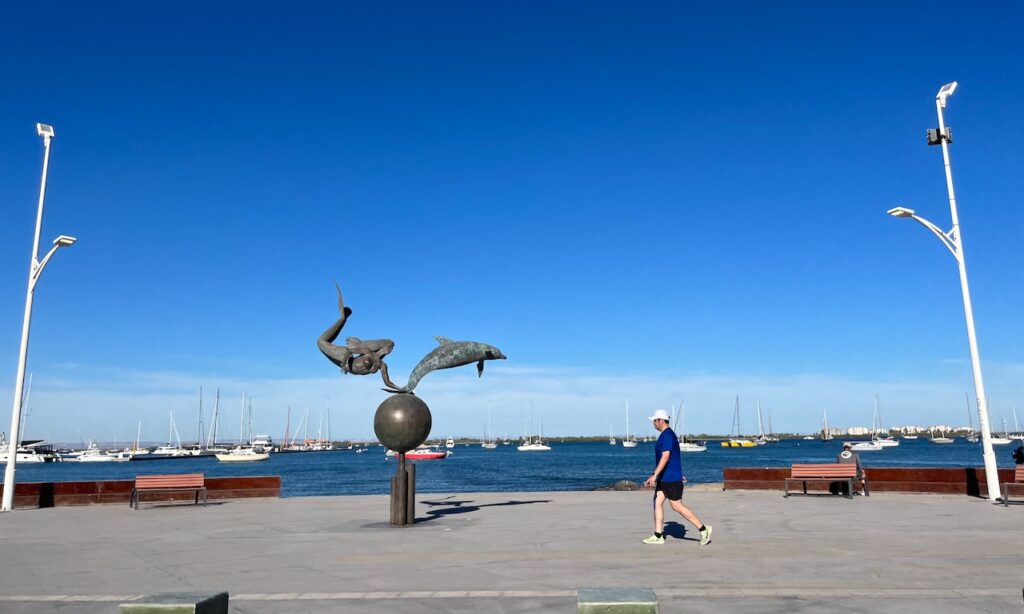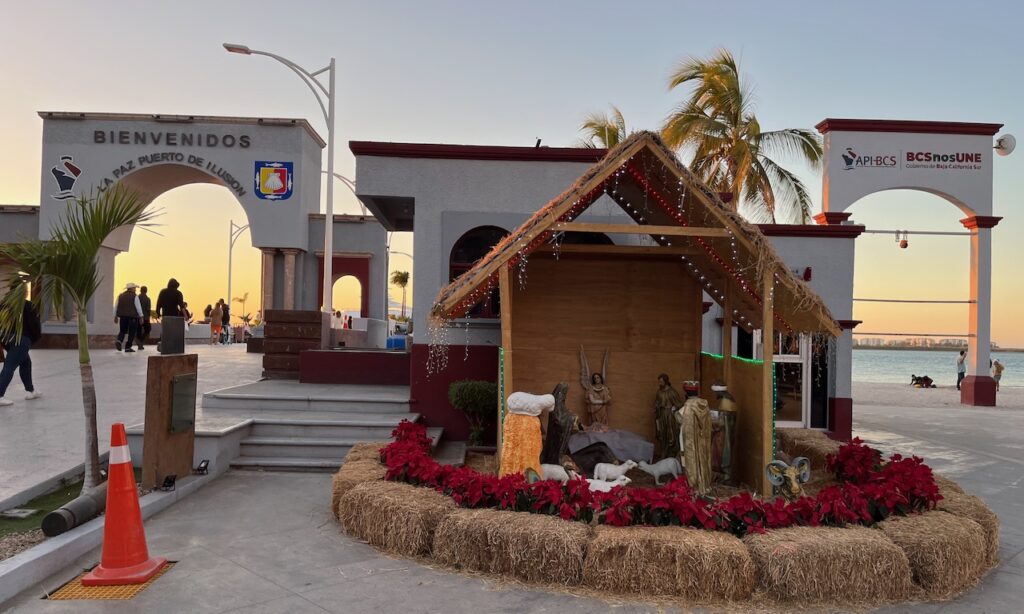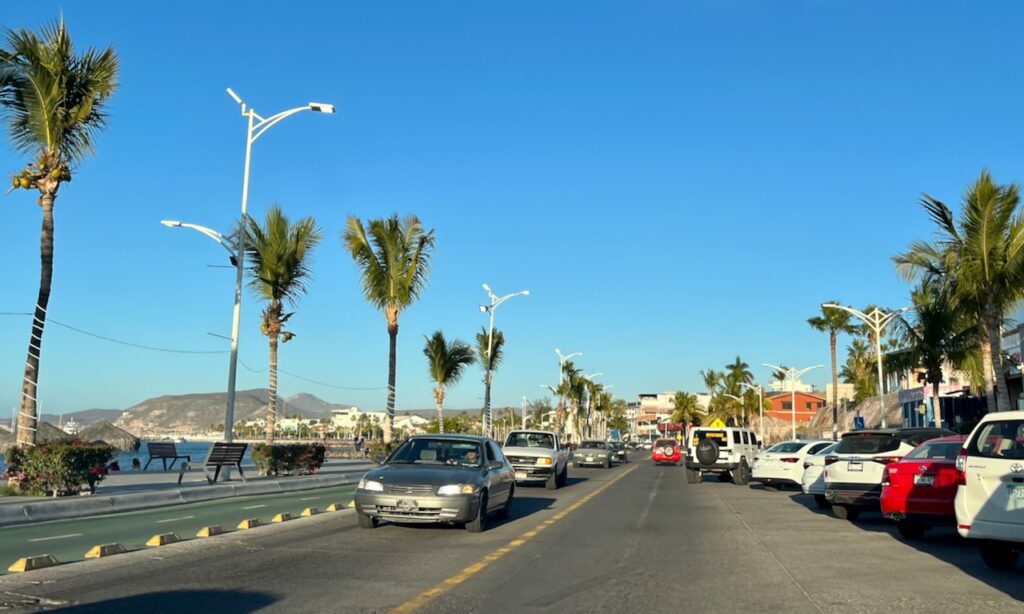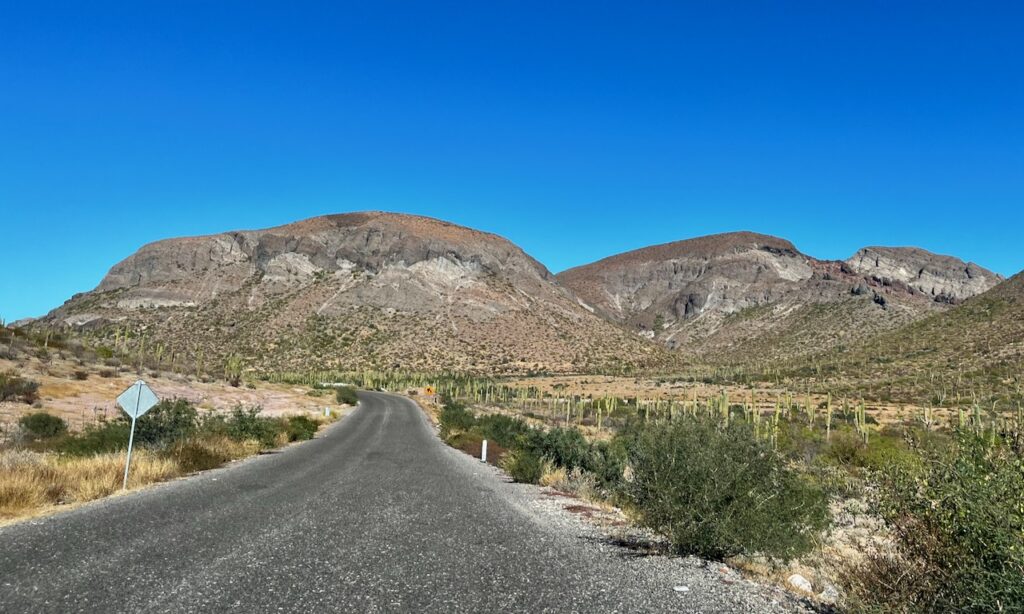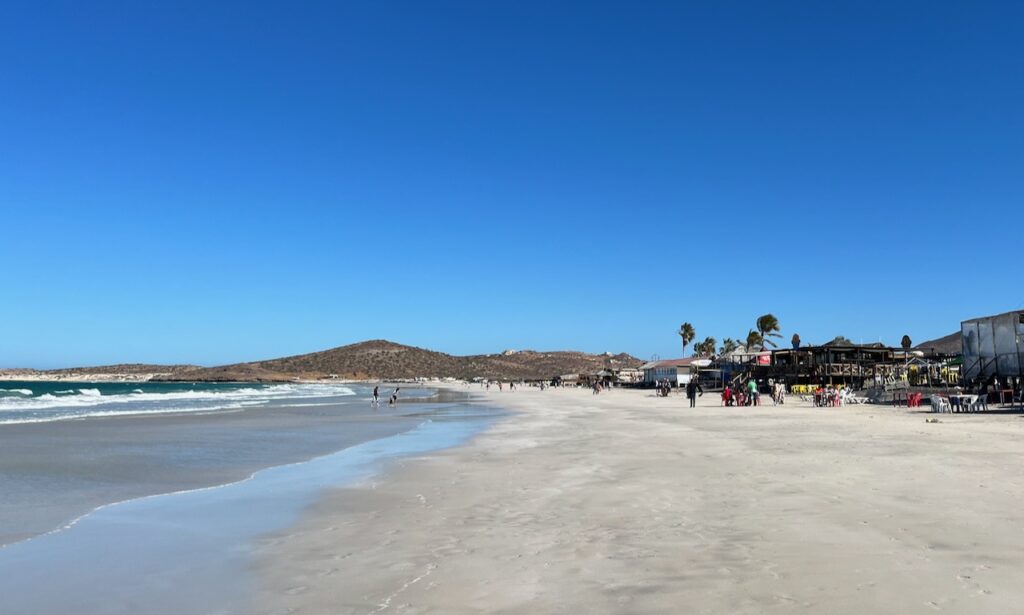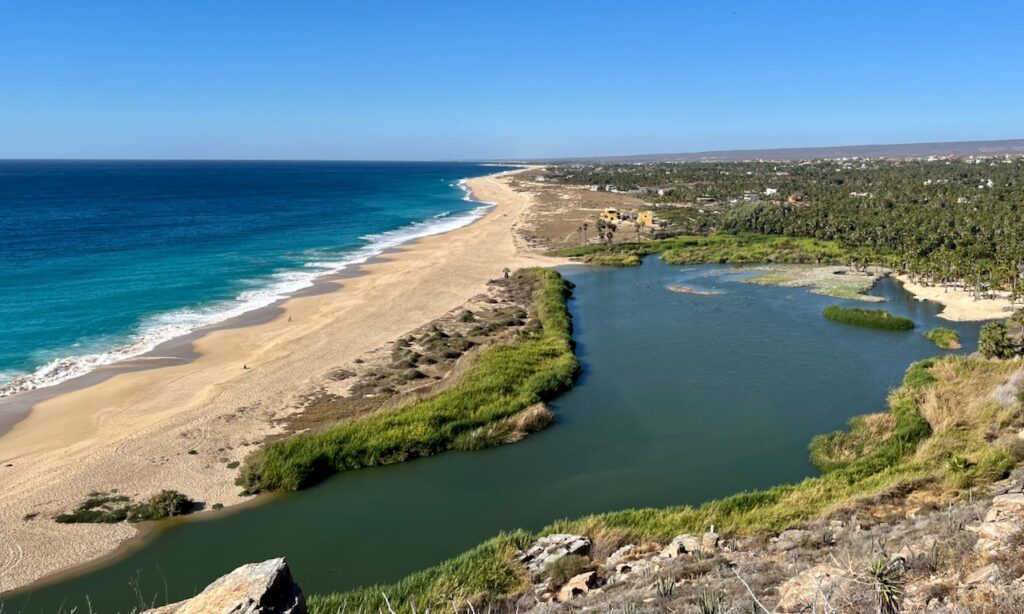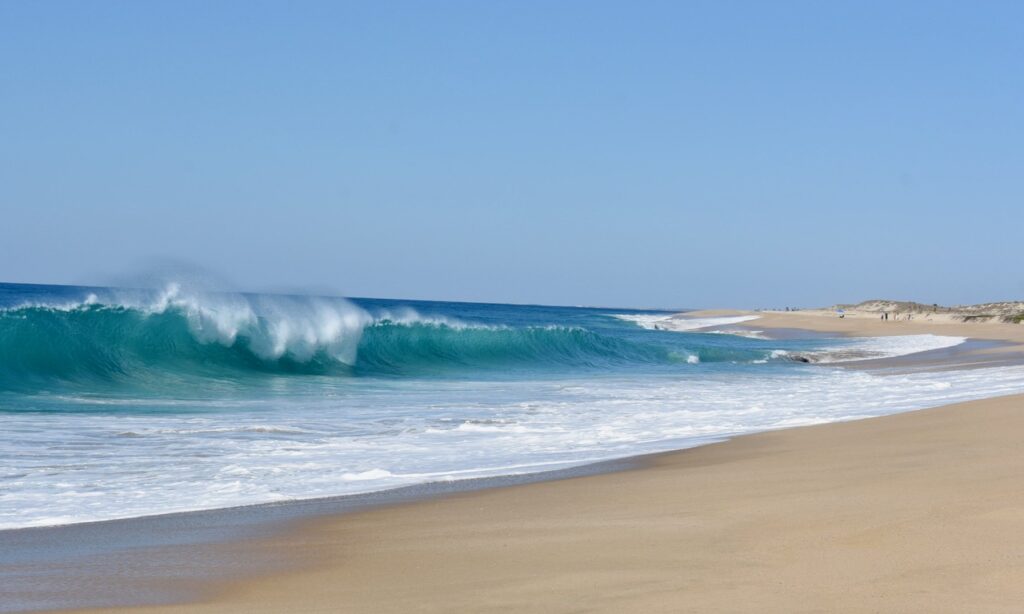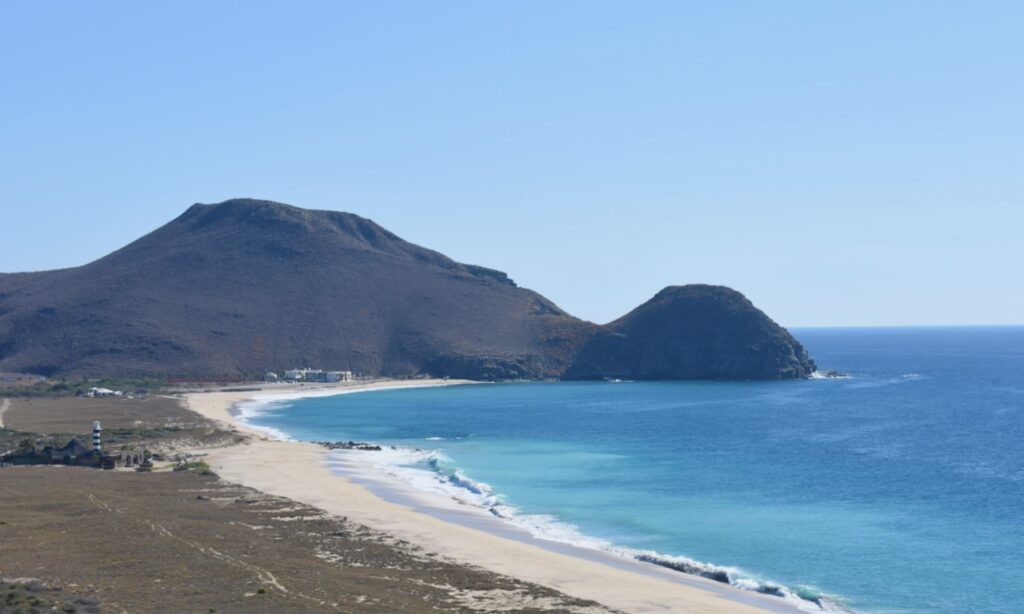We dove in two cenotes and explored several Mayan ruins around Tulum in Mexico, after doing some diving in Cozumel in August 2023.
Cenotes are sinkholes resulting from the collapse of the limestone bedrock. It is estimated that there are 10,000 cenotes around Yucatan peninsula. Some forming vast underground systems – a big draw for cave divers. We dove El Pit and Dos Ojos cenotes. Both are considered caverns – meaning one can always (or most of the time) see ambient light from outside. Here is a short video.
Here is what entrance into El Pit looks like. We were extremely lucky as we were the first to arrive to the site and were the first ones to go down. The surreal beauty of the undisturbed hydrogen sulfide layer in the crystal clear water with shimmering rays of light coming in made it an incredible dive.
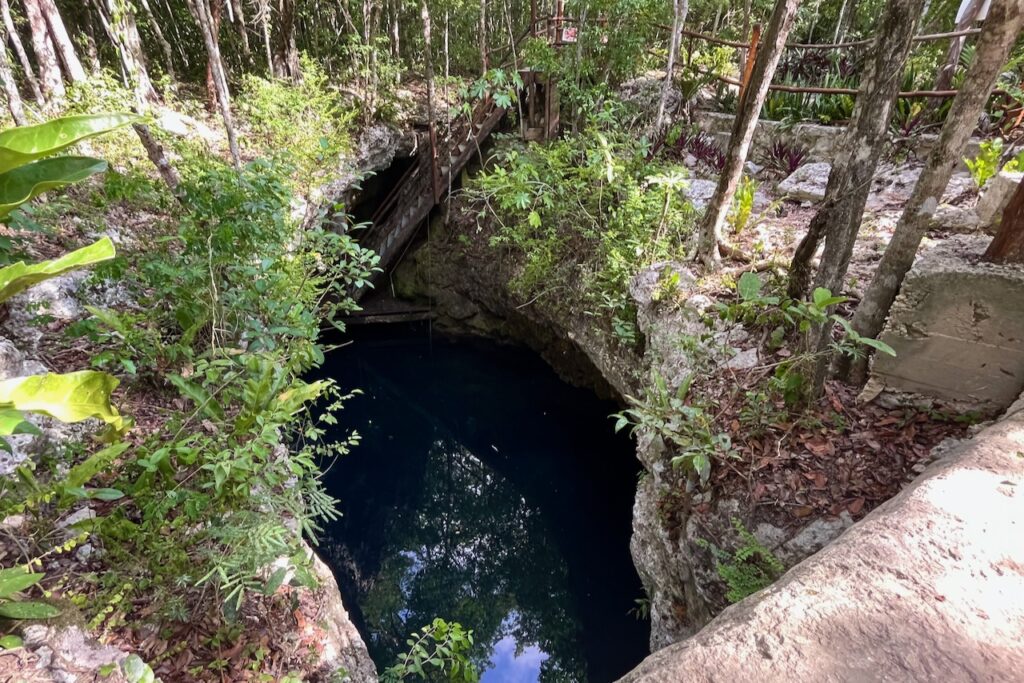
Dos Ojos is a part of a cave system, and has two routes. We went for the Barbie line. Diving here is along the line, and while we could see a little bit of light coming from outside, most of the route is through the overhead environment but there are no narrow passages – it is rather spacious.

We really liked our introduction to cenotes and definitely can see why so many cave divers flock to this part of Mexico. We dove with Flying Fish dive operator in Tulum. They are very professional, gear is in excellent condition, and they were really helpful in deciding where to go as we were new to cenotes and had some concerns about “not seeing the light”. Had excellent experience.
Exploring Mayan ruins from Tulum as a base
There are many Mayan ruins around Yucatan peninsula. We have explored four of them using Tulum town as our base
The nearest one is in Tulum itself. Mayan city of Tulum is located on the cliffs along the coast. It was a major trading center, built and occupied between 13th and 15th century and abandoned in 16th century, later than many other Mayan centers. It is a beautiful site and unique in being right on the coast unlike other sites hidden in the jungle.
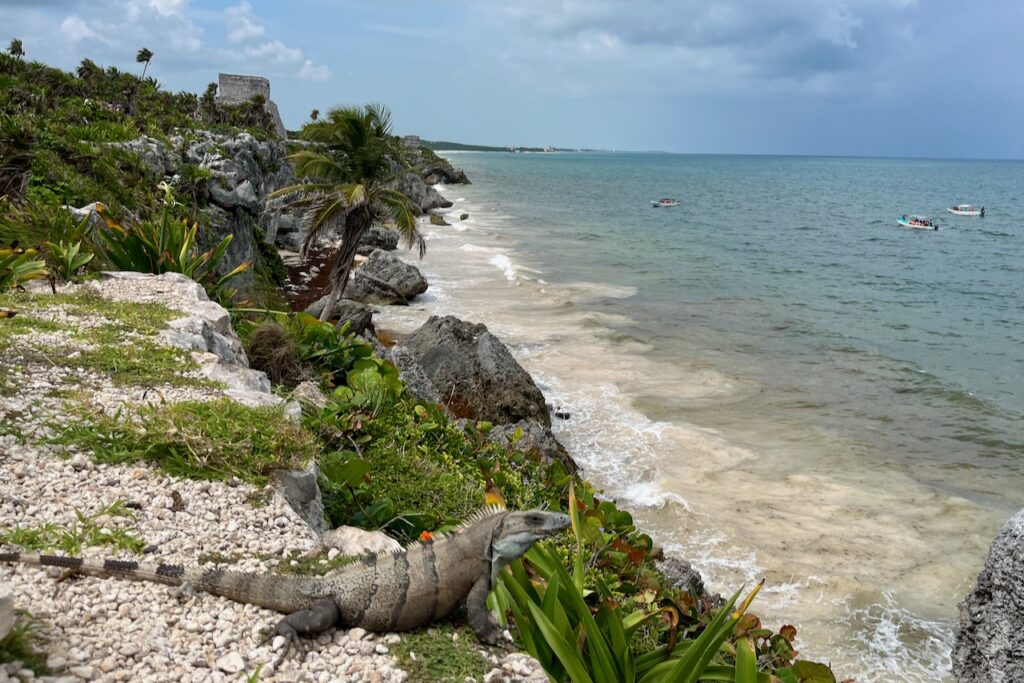
Tulum can get very busy with tourists even in low season. It is very popular with both cruise ship travelers and those staying along the Riviera Maya coast. The site is an open space, not shaded by jungle, and definitely a hat and sunscreen are essential.
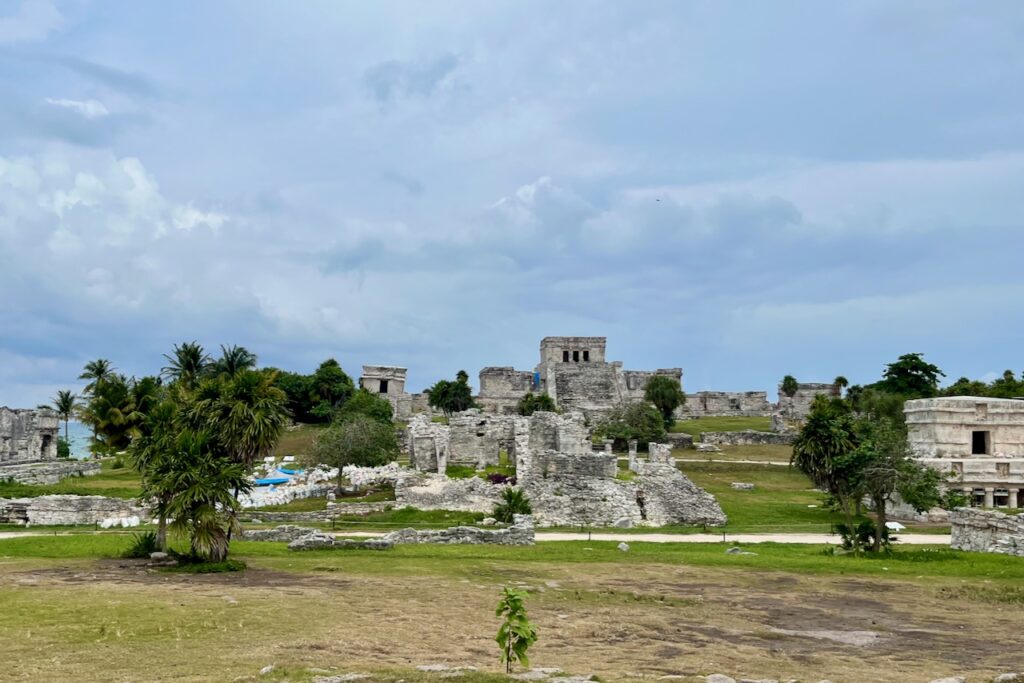
We took a day to explore further Mayan sites of Chichen Itza and Ek Balam with a stop in Vallabolid for lunch.
We had hired a car for our stay in Tulum and explored all the sites on our own. Chichen Itza was one of the largest Mayan cities in its day. It gets very busy with tourists with bus loads of cruise and coast visitors arriving to the site in mid morning. We tried to get ahead of the crowds (even in low season). Chichen Itza is about 2 hour drive from Tulum on a vary good road via the city of Vallabolid. Confusingly, but helpfully, Chichen Itza is in a different time zone from that of Tulum, an hour behind. So one has an extra hour to get to Chichen Itza early.
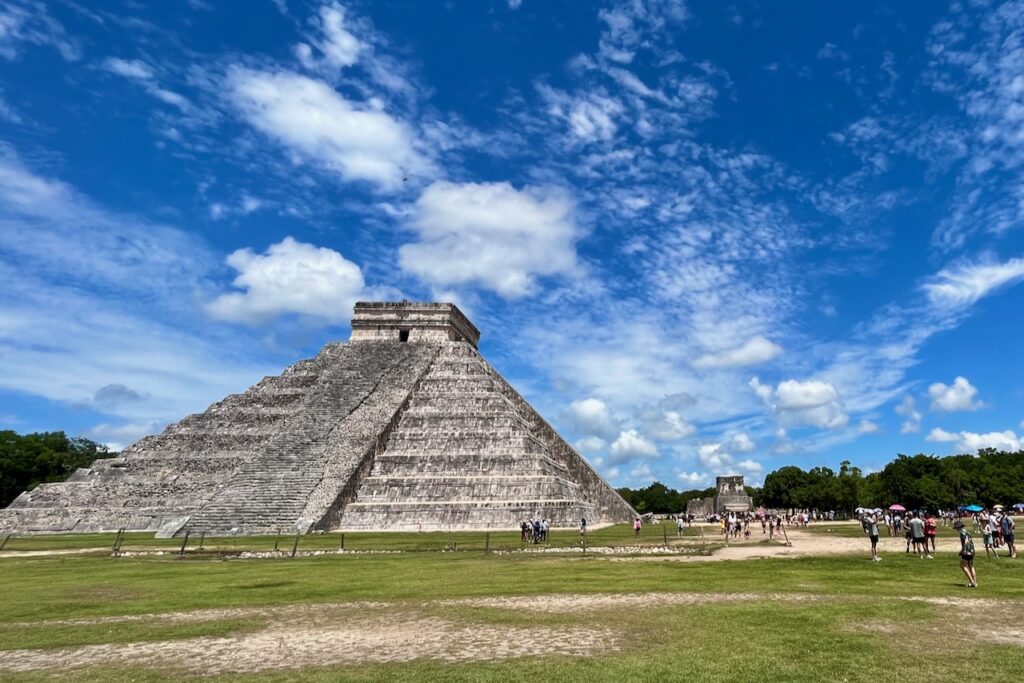
Chichen Itza was occupied between 7th and 13th centuries, and served as a major regional center at its peak. At its height, Chichen Itza population is estimated at over 50,000 people. There are huge temples and public spaces, a gigantic ball court, procession ways, and just stunning examples of Mayan architecture.
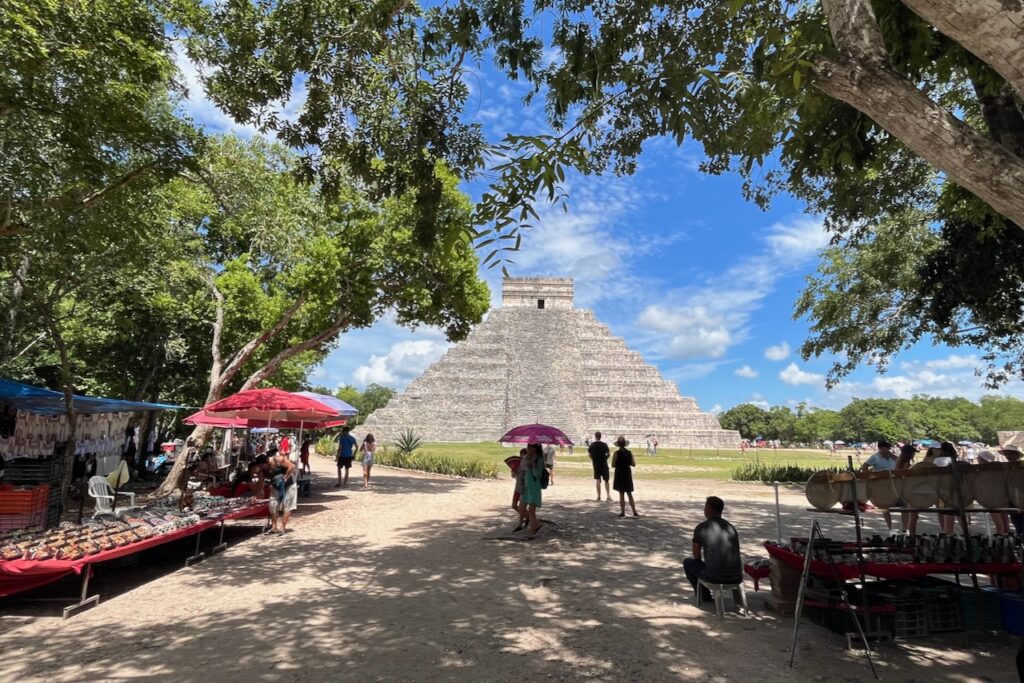
Having visited the site about twenty years before, the change was striking. Tourism is important for local economy. There are big areas with vendors selling every kind of Mayan souvenir one could imagine within the territory of the archeological site – though to be fair the stalls are in a distance from ruins themselves. One cannot climb any ruins anymore – and for a very good reason given the crowds. Despite the crowds, it is still an incredible site and definitely a must on Mayan history circuit.
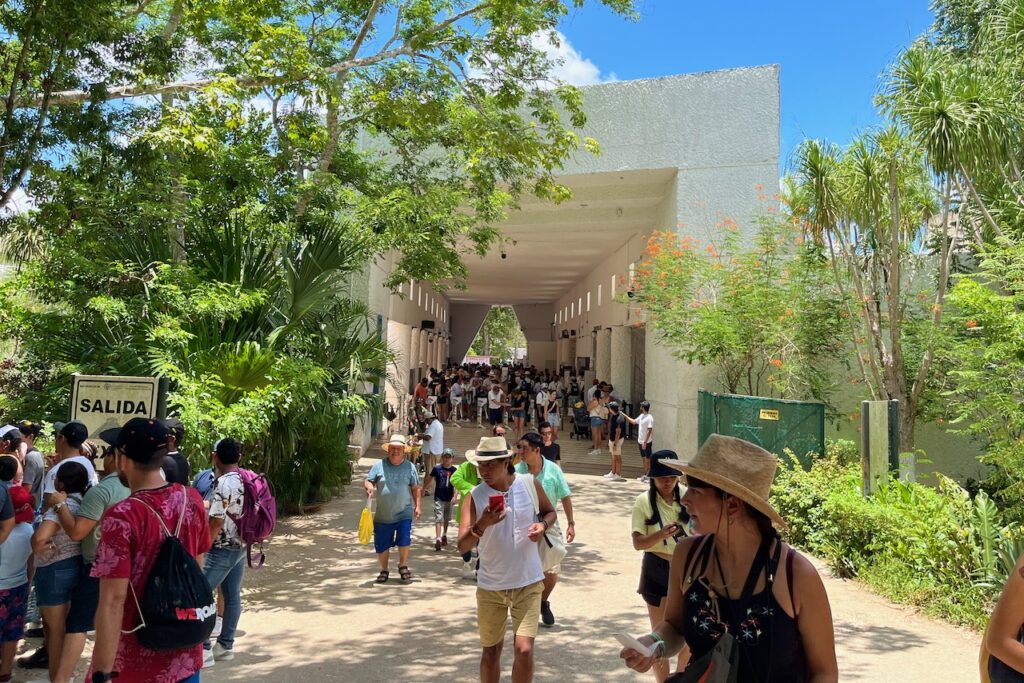
We were quite successful in beating the crowds in Chichen Itza and were departing as more and more buses with tourists were arriving. We headed to Vallabolid. A small city by Mexican standards, it has a historical city center with a nice square, cathedral, and pretty renovated historical buildings. We had a lunch in one of the restaurants on the square taking in the atmosphere.

Our plan then was to visit cenote Zaci in the town of Vallabolid and reportedly a good place to swim and cool down, which we felt we really needed after walking around in humid heat of Chichen Itza. We drove up to the cenote Zaci which had good facilities, well set up for visitors. But then solid rain started coming in so we decided that we should go to another Mayan site we saw on the map called Ek Balam and hopefully escape the rain by going there.
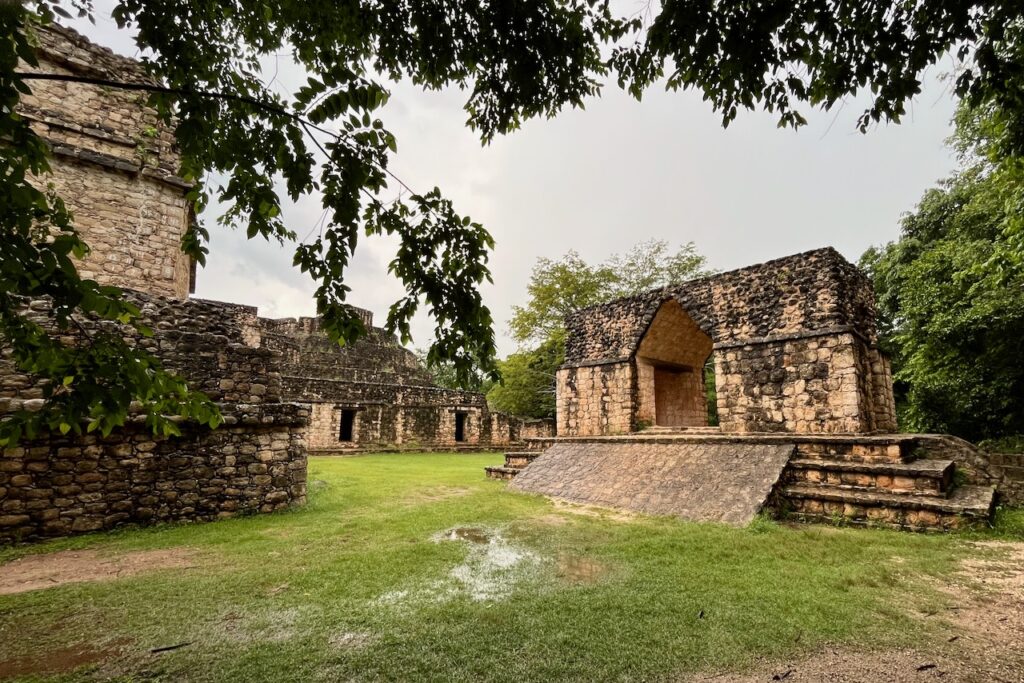
It was the best decision ever to go to Ek Balam. Ek Balam is about half an hour drive north of Vallabolid on a good road. We had the site almost to ourselves with only a couple of other visitors. Ek Balam was a significant center, capital of its region and at its peak had a population of 12-18 thousands. It has defensive walls, impressive gate, a ball court and multiple temples and public structures. There is a huge 30m tall and 127m long acropolis and one is still allowed to climb it. The view from the top is absolutely breathtaking with jungle shrouding ruins of Ek Balam.
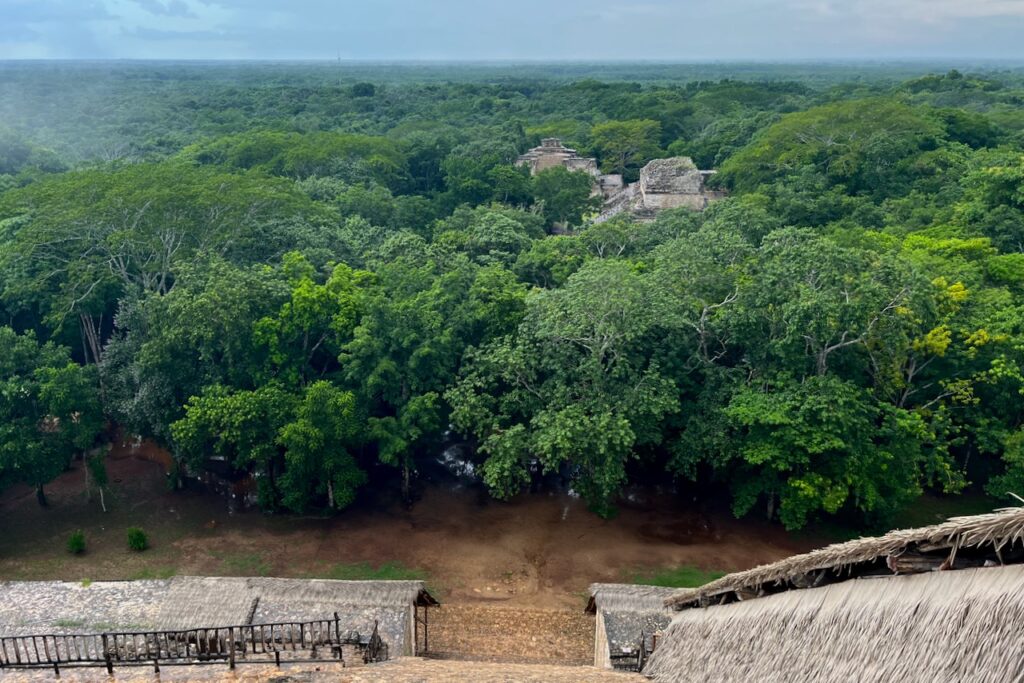
One of the more remarkable discoveries in Ek Balam was the tomb of the ruler Ukit Kan L’t Tok‘ located on the acropolis. For centuries the entrance was covered by a stone wall and as a result was not discovered, preserving the carvings and contents of the tomb. Archeological excavation in Ek Balam started in the late 1980s and the site was open to visitors in 1997. It is truly incredible to imagine all the secrets jungle in this region holds, and all the history yet to be discovered.
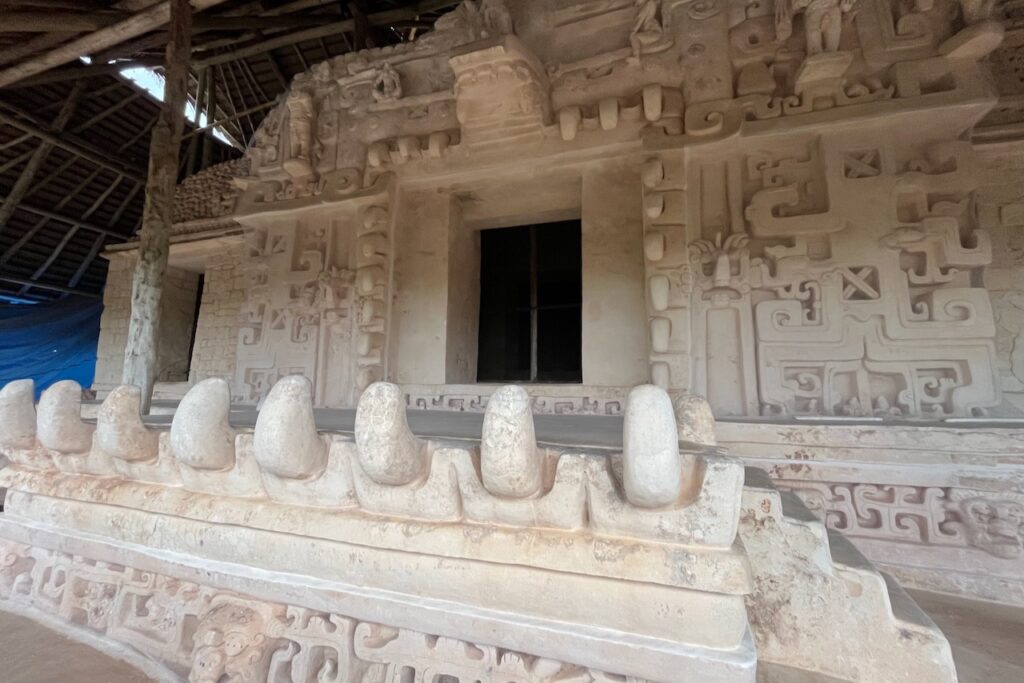
On our last day in Tulum we decided to explore another Mayan site – Muyil and lagoons next to it. When we visited in August 2023, Muyil was quiet and did not have many tourists. There are signs that the site is expecting to increase the number of visitors as now it is no longer possible to climb any of the structures. Muyil was a significant trade port in its day connecting the coast to Coba and other major cities inland. Only a few structures have been excavated and the work is continuing to uncover more. In the mean time with few visitors and buildings still covered by jungles it has a sense of mystery about it.
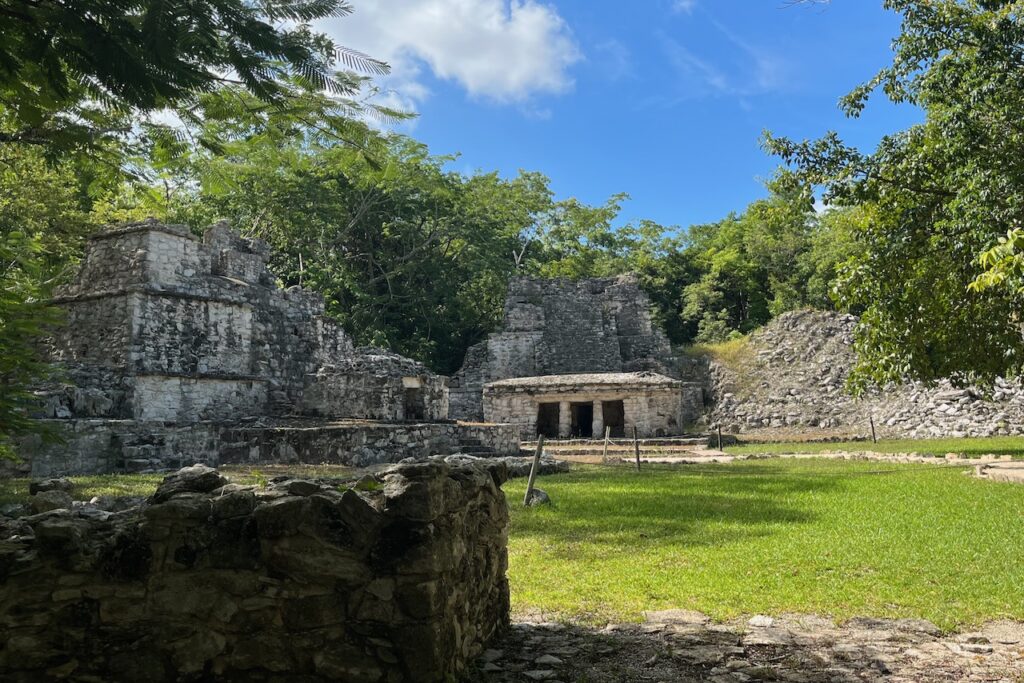
After visiting the site one can continue into the jungle and through a nice elevated walkway through a mangrove forest to Muyil lagoon. At Muyil lagoon there are private boat operators who take you on a tour on the lagoon, then through the canal connecting Muyil lagoon to a much larger Chunyaxché lagoon. And from there, one gets off the boat and floats on a canal through the mangroves, using life jacket as a flotation device. The lagoons are perfect turquoise blue. And the canals, are the same canals that Mayan people have used centuries before to transport goods from the coast inland to the port of Muyil. It was a really fascinating experience.
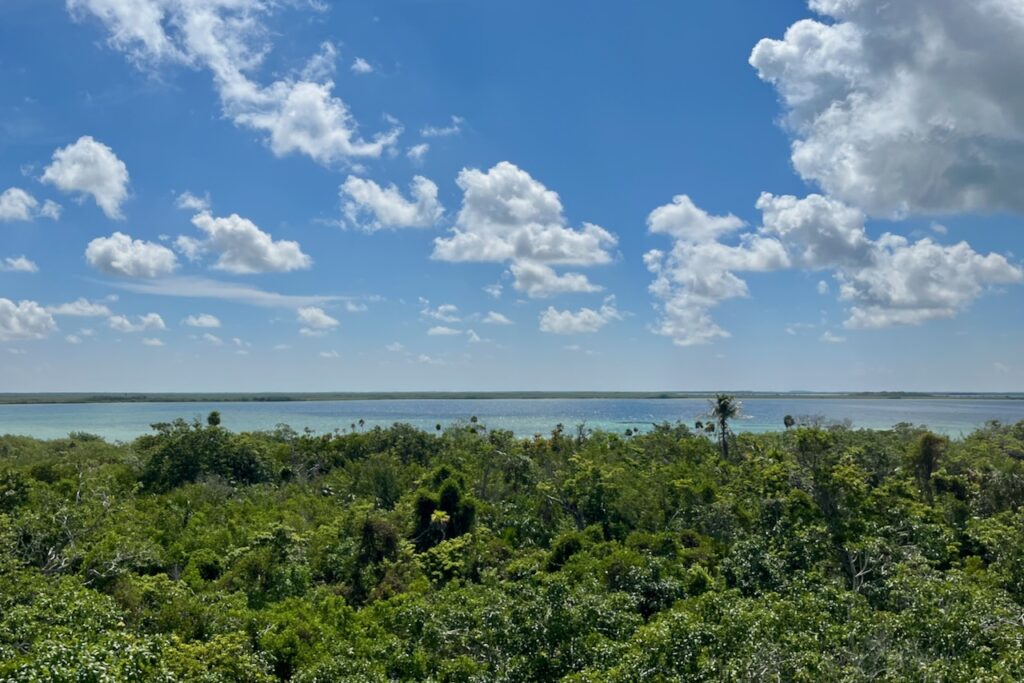
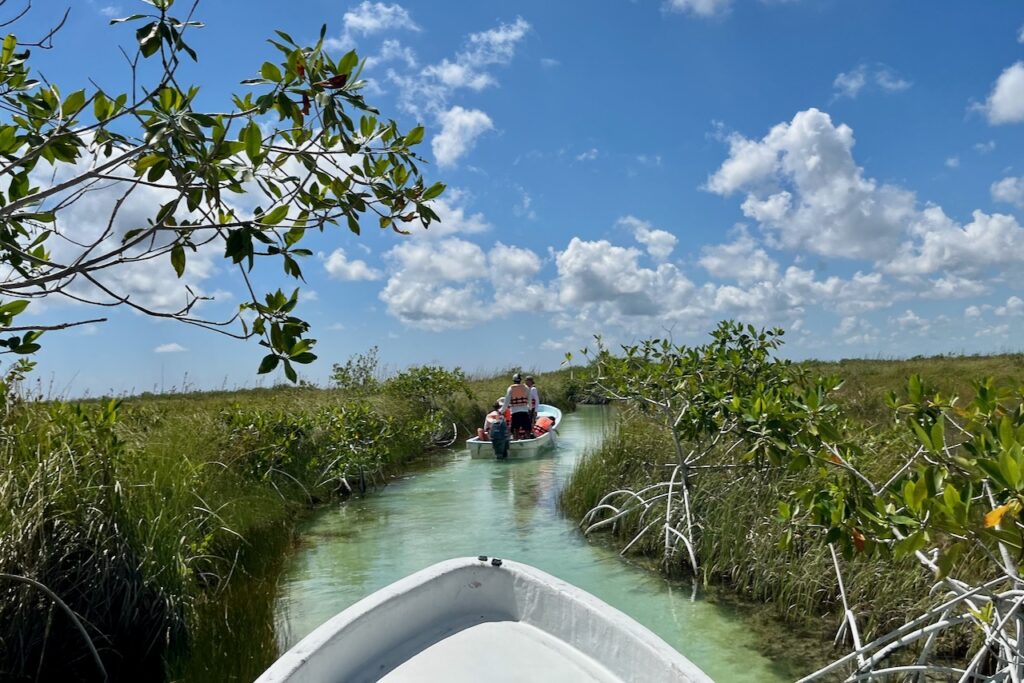

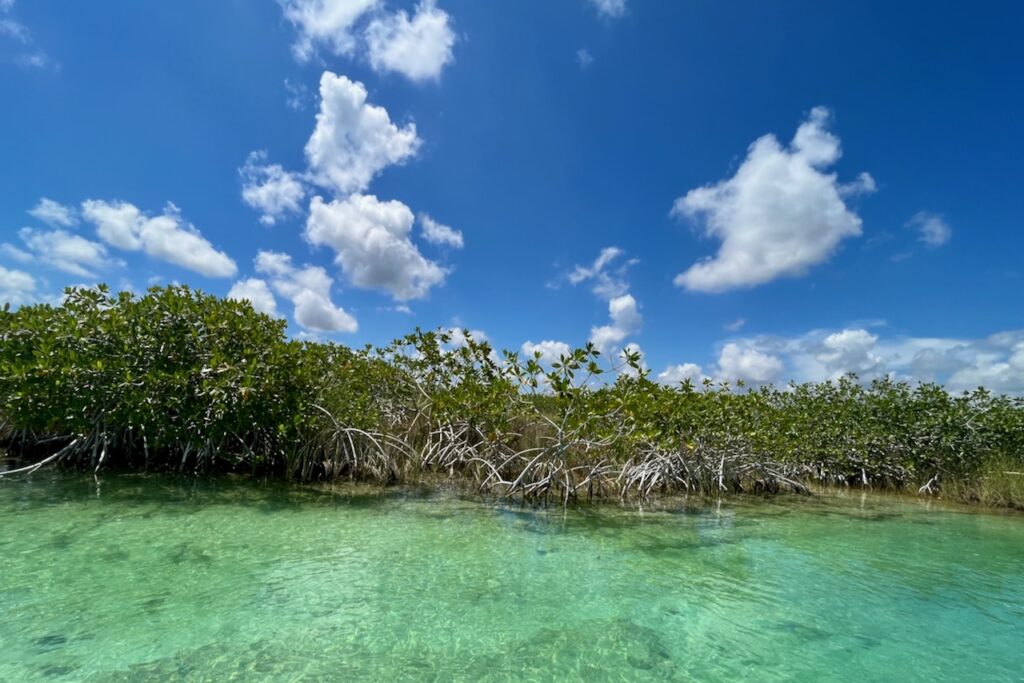
We visited four Mayan ruins – two busy with tourists and two almost to ourselves, and explored the channels that Maya built through mangroves between lagoons. We felt we did pretty well on our Mayan emersion in Yukatan and resolved to visit more Mayan sites in Belize and Guatemala to learn more about this incredible civilization.
We stayed in town of Tulum itself as most of our activities were all around the peninsula. On the last day we finally made it to the beach where big resorts and beach bars are. At the time there was quite a bit of sargassum which has been arriving in larger quantities lately all over the Caribbean. But in Tulum, even if there is sargassum at sea, there are lagoons and cenotes to swim in and many land based adventures. Not to mention great food, huge range of accommodation options and very friendly people. We had amazing time.
